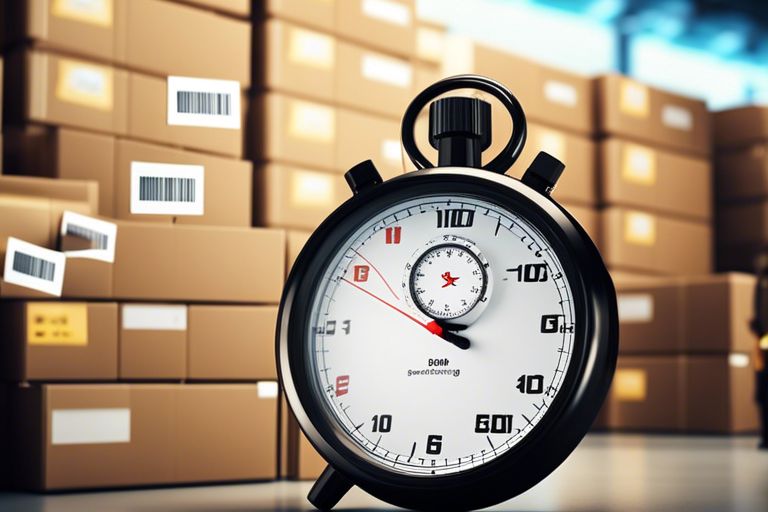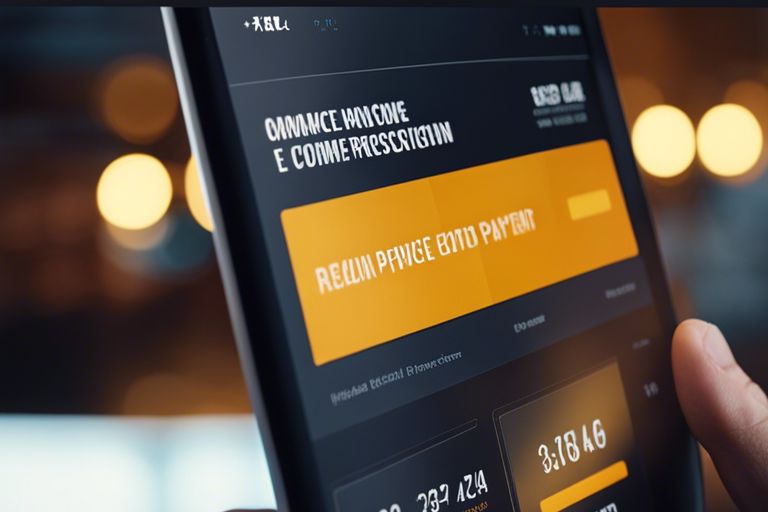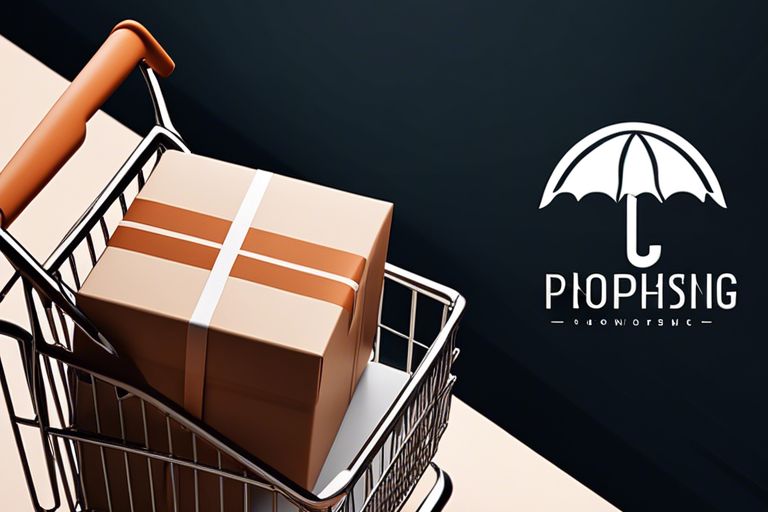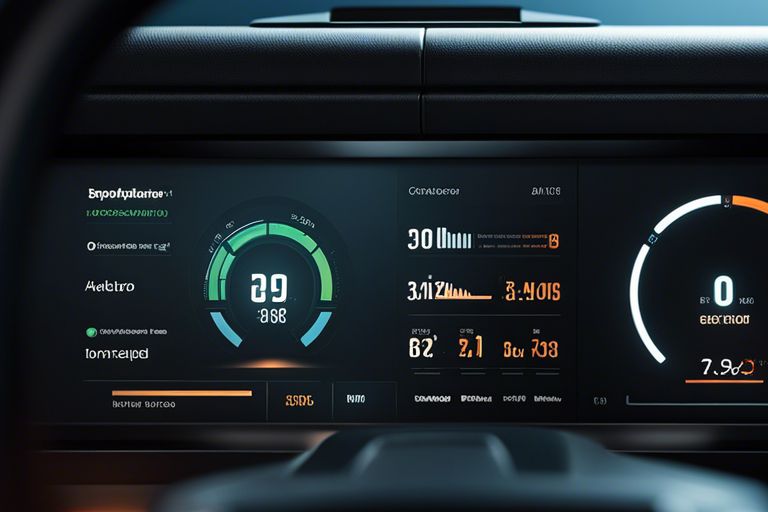How Can Website Load Time Optimization Boost Dropshipping Operations For Speed?
Most dropshipping operations rely heavily on a fast and efficient website to ensure a smooth customer experience. Optimizing website load time is crucial for increasing conversion rates, decreasing bounce rates, and improving search engine rankings. Slow loading times can lead to lost sales opportunities and frustrated customers. By implementing techniques to speed up the Largest Contentful Paint (LCP) time, dropshippers can enhance their website performance. Check out some Tips for speeding up LCP time to boost your dropshipping operations for speed.
Key Takeaways:
- Website load time optimization can enhance user experience: By reducing load times, dropshipping websites can provide a smoother and more enjoyable browsing experience for customers.
- Faster load times can improve SEO ranking: Search engines like Google prioritize websites with faster load times, leading to higher visibility and increased traffic.
- Optimizing website speed can boost conversion rates: Quicker loading pages often result in higher conversion rates as customers are more likely to make a purchase when they have a seamless shopping experience.
- Reduced bounce rates with faster load times: Slow-loading websites often lead to higher bounce rates, while optimized speed can engage users and encourage them to stay on the site longer.
- Mobile optimization is crucial for dropshipping success: As mobile usage continues to rise, ensuring fast load times on mobile devices is essential for reaching and converting a larger customer base.
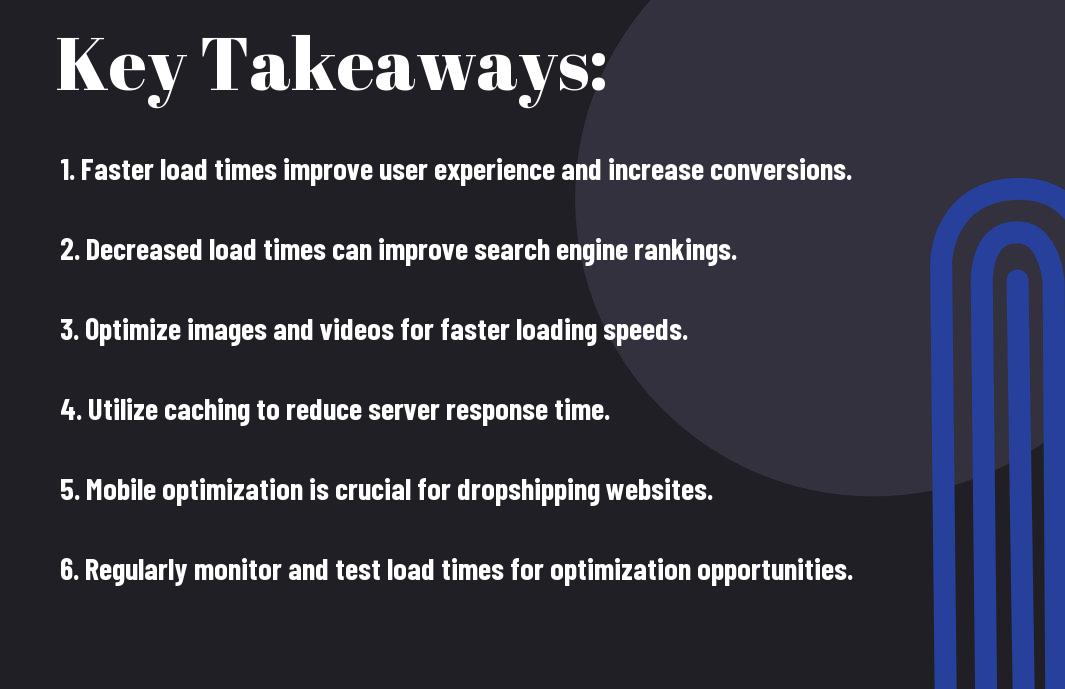
The Impact of Load Time on User Experience
Some studies have shown that website load time plays a crucial role in user experience. A slow-loading website can frustrate visitors and lead to high bounce rates, meaning users leave the site without interacting further. In today’s fast-paced digital world, speed is key to keeping users engaged and satisfied.
First Impressions and Website Speed
With the average internet user’s attention span dwindling, first impressions are more important than ever. A website that takes too long to load can leave a negative impression on visitors, causing them to perceive the brand as unreliable or outdated. Users expect instant gratification, and a slow website can deter them from exploring what the site has to offer.
Furthermore, slow load times can hinder a website’s search engine rankings, as search engines like Google consider speed as a ranking factor. This can result in lower visibility and decreased organic traffic, ultimately impacting the success of a dropshipping operation.
Bounce Rate and Conversion Correlation
Any dropshipper knows that a high bounce rate can negatively impact conversion rates. Users are more likely to bounce off a website that loads slowly, leading to a direct correlation between load time, bounce rate, and conversions. If visitors are not staying on the site long enough to make a purchase, it can significantly impact the bottom line of a dropshipping business.
Impactful load time optimization strategies can help reduce bounce rates, increase user engagement, and ultimately improve conversion rates. By prioritizing speed and performance, dropshippers can create a seamless and enjoyable shopping experience for their customers, leading to higher sales and improved business growth.
Technical Aspects of Website Load Time Optimization
Analyzing Current Website Performance
Load time optimization begins with a thorough analysis of your current website performance. This involves evaluating key metrics such as page load speed, server response time, and overall website responsiveness. By identifying bottlenecks and areas for improvement, you can develop a targeted optimization strategy to enhance the speed and performance of your dropshipping website.
Furthermore, analyzing user behavior and interaction with your website can provide valuable insights into how load times impact user experience and engagement. Understanding where users may be experiencing delays or frustrations can help you prioritize optimization efforts and tailor them to meet the specific needs of your target audience.
Best Practices for Speed Optimization
An effective way to improve website load time is by implementing content delivery networks (CDNs) to distribute content closer to users, reducing server latency. Optimizing images and videos for web delivery can also significantly decrease load times. Additionally, minifying CSS and JavaScript files, leveraging browser caching, and enabling GZIP compression are key techniques to enhance website speed and performance.
With continuous monitoring and testing, you can identify new opportunities for optimization and ensure that your website consistently delivers a fast and seamless user experience. By staying informed about the latest industry trends and technologies, you can stay ahead of the competition and provide your dropshipping customers with a website that loads quickly and efficiently.
Integrating Load Time Optimization into Dropshipping
For dropshipping businesses, integrating load time optimization into their operations is crucial for achieving success in today’s fast-paced online marketplace. By focusing on improving website speed, dropshippers can enhance user experience, increase conversions, and ultimately boost their bottom line.
Dropshipping-Specific Challenges and Solutions
Challenges: Dropshipping operations often face unique challenges when it comes to load time optimization. Since products are sourced from third-party suppliers, websites can experience delays in loading product images and information. Additionally, dropshippers must contend with high traffic volumes and fluctuating inventory levels, which can impact site performance.
Solutions: To address these challenges, dropshippers can implement several strategies to optimize load times. Utilizing content delivery networks (CDNs) to cache product data, compressing images for faster loading, and reducing unnecessary scripts can all help improve website speed and performance for a seamless user experience.
Measuring the Impact on Dropshipping Operations
For dropshipping businesses, measuring the impact of load time optimization on operations is essential for assessing the effectiveness of optimization efforts. By tracking key performance indicators (KPIs) such as bounce rate, conversion rate, and average order value, dropshippers can gain valuable insights into how website speed is impacting their bottom line.
Optimization efforts that result in decreased bounce rates, increased conversions, and higher average order values can directly contribute to the success of a dropshipping business. By prioritizing load time optimization and consistently monitoring KPIs, dropshippers can stay ahead of the competition and drive growth in their online operations.
Strategies for Continuous Improvement
Now, let’s examine into the key strategies for continuous improvement in website load time optimization to enhance dropshipping operations for speed.
Monitoring Tools and Metrics
Tools for monitoring website performance metrics play a crucial role in the continuous improvement of load times. Utilizing tools such as Google PageSpeed Insights, GTmetrix, or Pingdom allows dropshippers to track and analyze various performance metrics like page load time, time to first byte, and overall page size. These tools provide valuable insights into areas that need improvement and help in identifying bottlenecks that may be slowing down the site.
Adapting to New Technologies and Trends
Metrics like mobile optimization, image compression, and server response time are essential factors to consider when adapting to new technologies and trends in website load time optimization for dropshipping. Staying updated with the latest industry trends and implementing innovative technologies like Accelerated Mobile Pages (AMP) and Content Delivery Networks (CDN) can significantly improve load times and enhance user experience.
Adapting to new technologies and trends is crucial for dropshippers looking to stay ahead of the competition and provide a seamless online shopping experience for their customers.
Conclusion
Upon reflecting on the impact of website load time optimization on dropshipping operations, it becomes evident that speed is a critical factor for success in the competitive e-commerce landscape. By ensuring fast load times, dropshipping businesses can enhance user experience, improve SEO rankings, increase conversions, and ultimately boost their overall performance. For a comprehensive guide on optimizing website load times for e-commerce, check out The Complete Guide to Ecommerce Website Load Times. Implementing these strategies can undoubtedly give dropshipping operations the edge they need to thrive in today’s digital marketplace.
FAQ
Q: Why is website load time optimization important for dropshipping operations?
A: Website load time optimization is crucial for dropshipping operations as it directly impacts user experience, conversion rates, and search engine rankings. Faster loading times lead to higher customer satisfaction and increased sales.
Q: How does website load time affect dropshipping operations for speed?
A: A slow-loading website can deter potential customers, resulting in higher bounce rates and lower sales. By optimizing load times, dropshipping businesses can provide a seamless browsing experience, leading to improved performance and competitiveness.
Q: What are the key benefits of optimizing website load time for dropshipping operations?
A: Optimizing website load time for dropshipping operations can lead to increased traffic, higher conversion rates, improved SEO rankings, enhanced user experience, and ultimately, higher revenue generation.
Q: What strategies can be implemented to optimize website load time for dropshipping operations?
A: Strategies such as image optimization, minification of CSS and JavaScript files, leveraging browser caching, utilizing content delivery networks (CDNs), and reducing server response time can significantly improve website load times for dropshipping operations.
Q: How can dropshipping businesses measure the effectiveness of website load time optimization?
A: Dropshipping businesses can measure the effectiveness of website load time optimization through tools like Google PageSpeed Insights, GTmetrix, and Pingdom. These tools provide detailed insights into loading times, performance metrics, and recommendations for further optimization.

